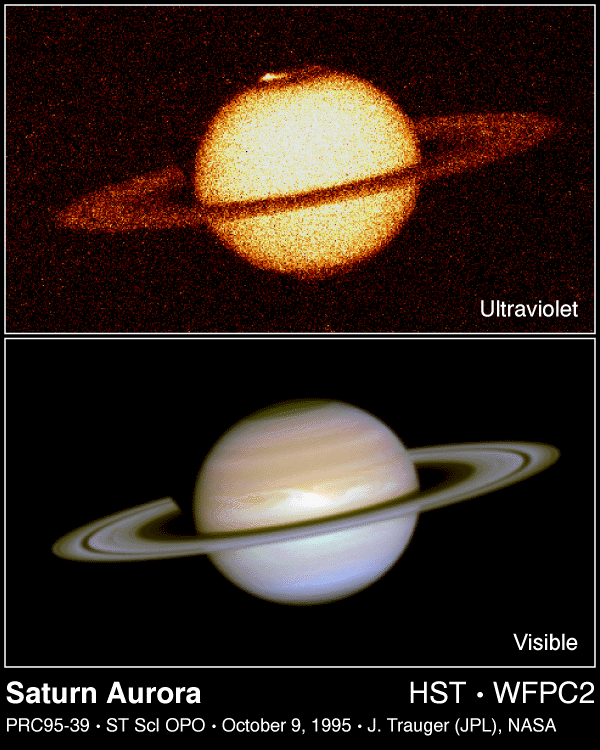![]()
| Home Michael Ammar Solar System Solar System Summary Sun Sun's Statistics Mercury Mercury's Statistics Venus Venus' Statistics Earth Earth's Statistics Mars Mars' Statistics Asteroid Field Asteroid Field's Statistics Jupiter Jupiter's Statistics Saturn Saturn's Statistics Uranus Uranus' Statistics Neptun Neptun's Statistics Pluto Pluto's Statistics Picture Library |
 |
| HST Views
Aurora on Saturn The top image shows the first image ever taken of bright aurorae at Saturn's northern and southern poles, as seen in far ultraviolet light by the Hubble Space Telescope. Hubble resolves a luminous, circular band centered on the north pole, where an enormous auroral curtain rises as far as 2,000 kilometers (1,200 miles) above the cloudtops. This curtain changed rapidly in brightness and extent over the two hour period of HST observations. The aurora is produced as trapped charged particles precipitating from the magnetosphere collide with atmospheric gases. As a result of the bombardment, Saturn's gases glow at far-ultraviolet wavelengths (110-160 nanometers). These wavelengths are absorbed by the Earth's atmosphere, and can only be observed from space-based telescopes. For comparison, the bottom image is a visible-light color composite of Saturn as seen by Hubble on December 1, 1994. Unlike the ultraviolet image, Saturn's familiar atmospheric belts and zones are clearly seen. The lower cloud deck is not visible at UV wavelengths because sunlight is reflected from higher in the atmosphere. |
Send mail to [email protected] with questions or comments
about this web site.
Copyright � 1998 Michael Ammar.